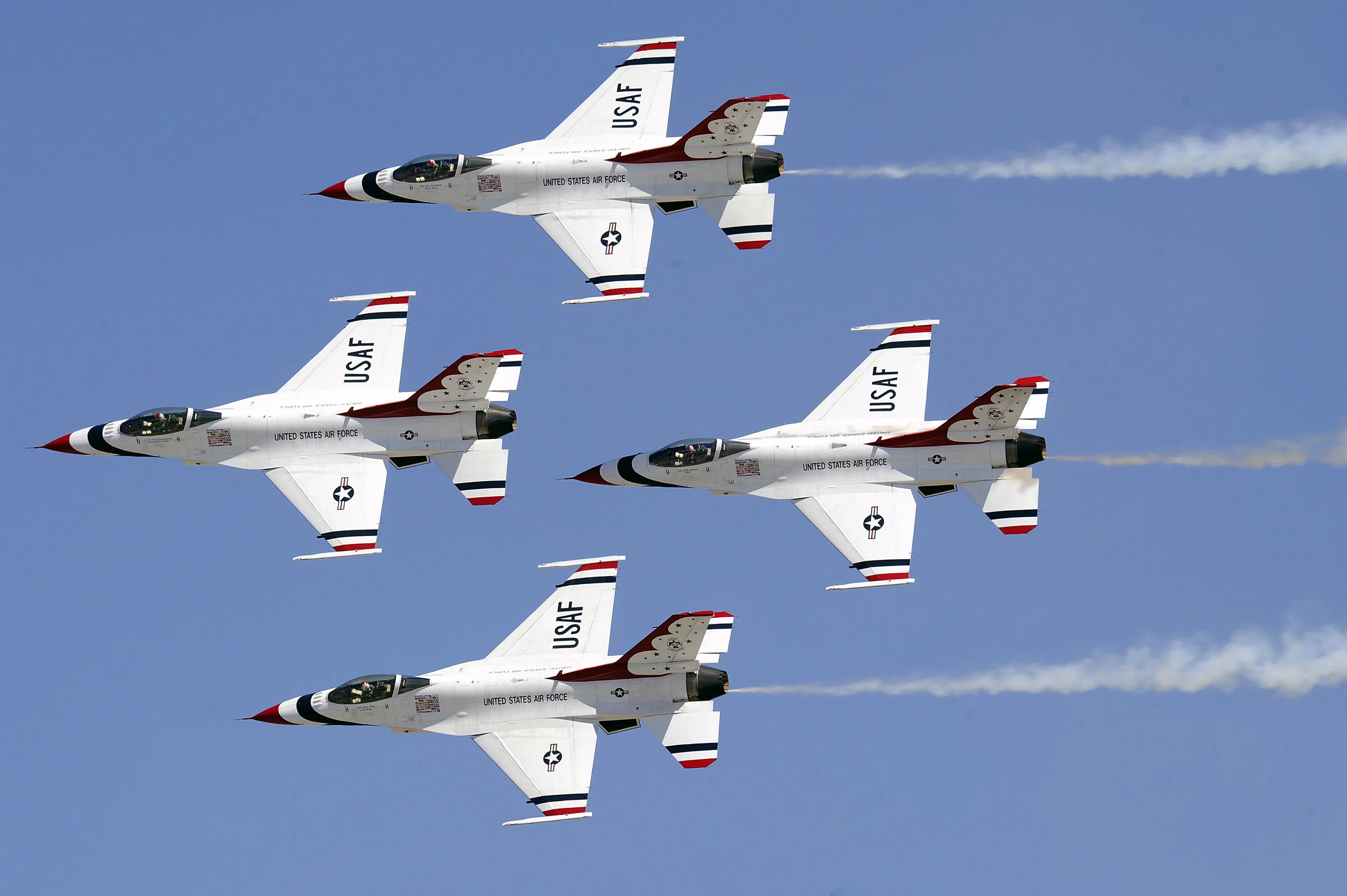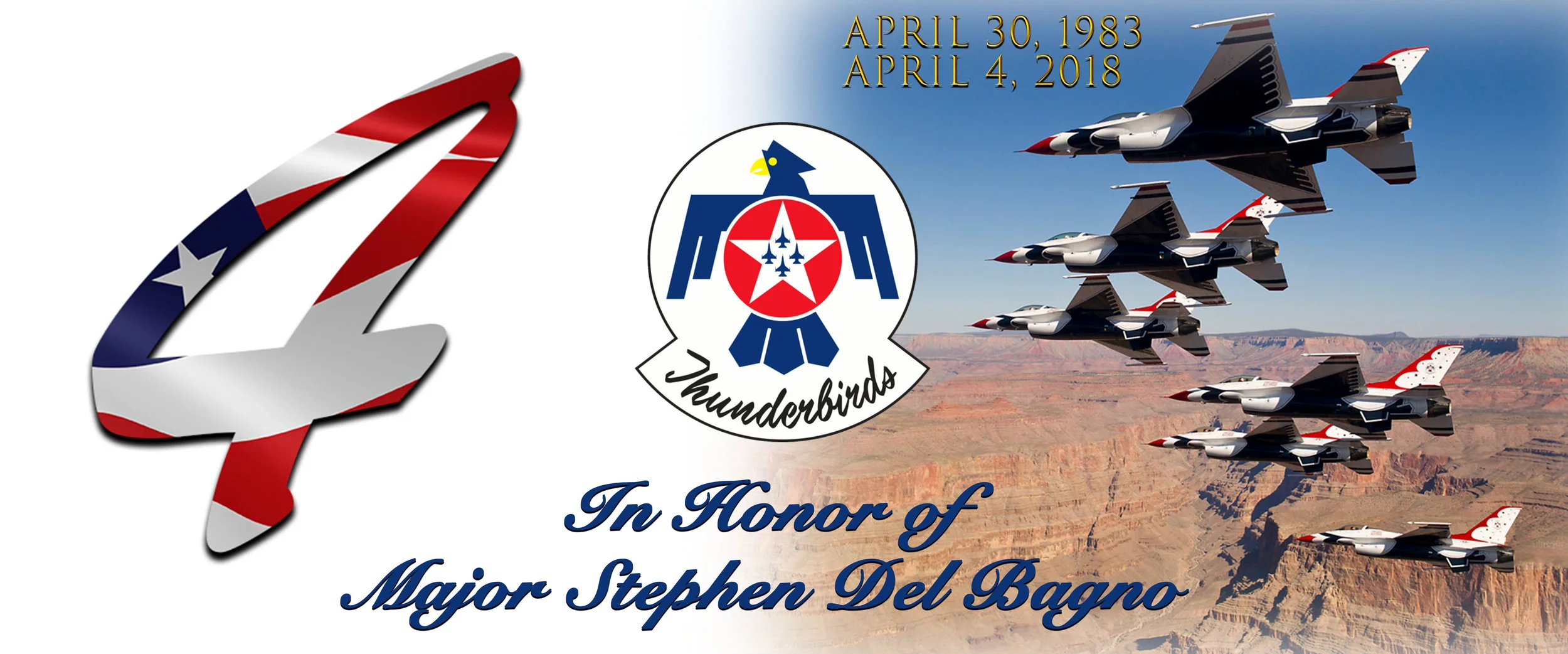Air Forces Releases Report on Fatal Crash of Thunderbird 4
The United States Air Force has concluded its investigation on the April 4th crash of a Thunderbirds F-16 Fighting Falcon, piloted by Major Stephen “Cajun” Del Bagno. The crash took the life of Major Del Bagno, and for months has been left up to speculation. Following the crash, the Thunderbirds stood down and cancelled several shows before returning to flying status, and have since brought back Major Nick “Khan” Krajicek to fly the slot position as Thunderbird 4.
According to the report, the cause of the crash was G-LOC, or G-induced loss of consciousness, during the High Bomb Burst Rejoin, the maneuver following the High Bomb Burst Cross. During that time, Major Del Bagno flew inverted experiencing up to 2.06 negative G’s and then immediately after pulled 8.56 positive G’s. The vast change in forces due to gravity led to absolute incapacitation for approximately 5 seconds, and by the time Del Bagno regained consciousness, he had only one second until his F-16 impacted the ground, in which there was not enough time for a complete recovery or ejection.
The executive summary can be seen below:
On 4 April 2018, the mishap pilot (MP), flying a F-16CM, tail number (T/N) 91-0413, assigned to the United States Air Force Air Demonstration Squadron, the “Thunderbirds,” 57th Wing, Nellis Air Force Base (AFB), Nevada (NV), engaged in a routine aerial demonstration training flight at the Nevada Test and Training Range (NTTR) near Creech AFB, NV. During the training flight, at approximately 1029 local time, the mishap aircraft (MA) impacted the ground and fatally injured the MP, without an ejection attempt.
The mishap mission was planned and authorized as a practice of a Thunderbirds aerial demonstration in the south part of the NTTR. The mishap flight was a formation of six F-16CMs (Thunderbirds #1-6), the standard Thunderbirds aerial demonstration flight. Thunderbird #4 was the MA/MP. During the High Bomb Burst Rejoin, an aerial maneuver near the scheduled end of the aerial demonstration training flight, the MP flew the MA for approximately 22 seconds in inverted flight between 5,500 and 5,700 feet above ground level. During this time, the MP experienced a change in force due to acceleration measured in multiples of the acceleration of gravity felt at the earth’s surface (G), between -0.5 to -2.06 G’s. While experiencing -2.06 G’s in inverted flight, the MP initiated a descending half-loop maneuver (Split-S). After five seconds in the Split-S, the MP attained a maximum +8.56 G’s. The MP experienced G-induced loss of consciousness (G-LOC) and absolute incapacitation at the end of that five-second period.
For approximately the next five seconds, the MP remained in a state of absolute incapacitation and made no deliberate flight control inputs as the MA accelerated toward the ground. Approximately one second prior to ground impact, the MP began deliberate flight control inputs as he transitioned from absolute to relative incapacitation. The MA impacted the ground at 57 degrees nose low with 89 degrees of left bank and the MP was fatally injured on impact, without an ejection attempt.
The Accident Investigation Board (AIB) President found by a preponderance of evidence the cause of the mishap was the MP’s G-LOC during the Split-S portion of the High Bomb Burst Rejoin maneuver. Additionally, the AIB President found by a preponderance of evidence two factors substantially contributed to the mishap: (a) the MP’s diminished tolerance to +G’s induced by the physiology of the MP’s exposure to –G’s (“Push-Pull Effect”) and (b) an associated decrease in the effectiveness of the MP’s Anti-G straining maneuver under those conditions.


